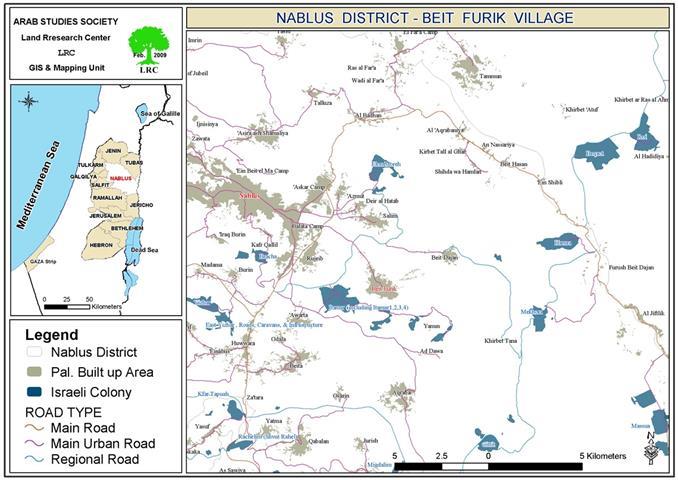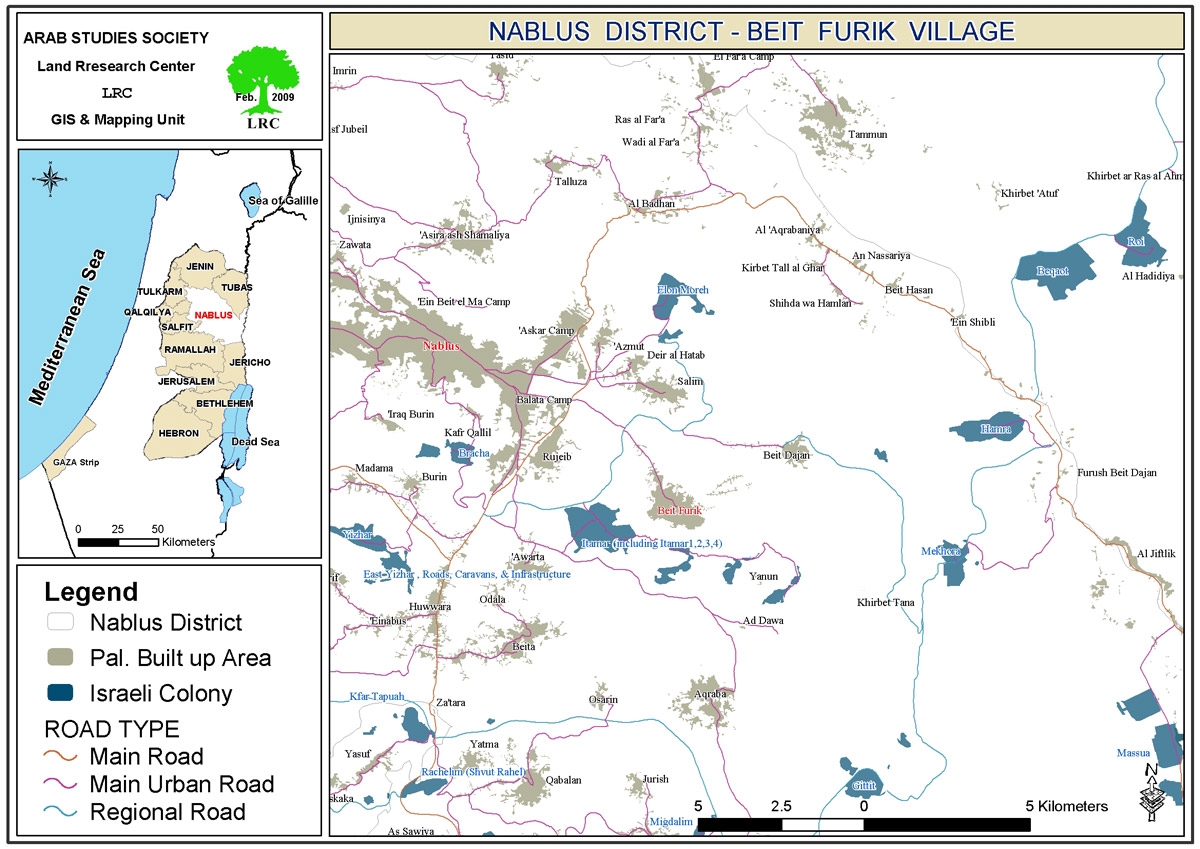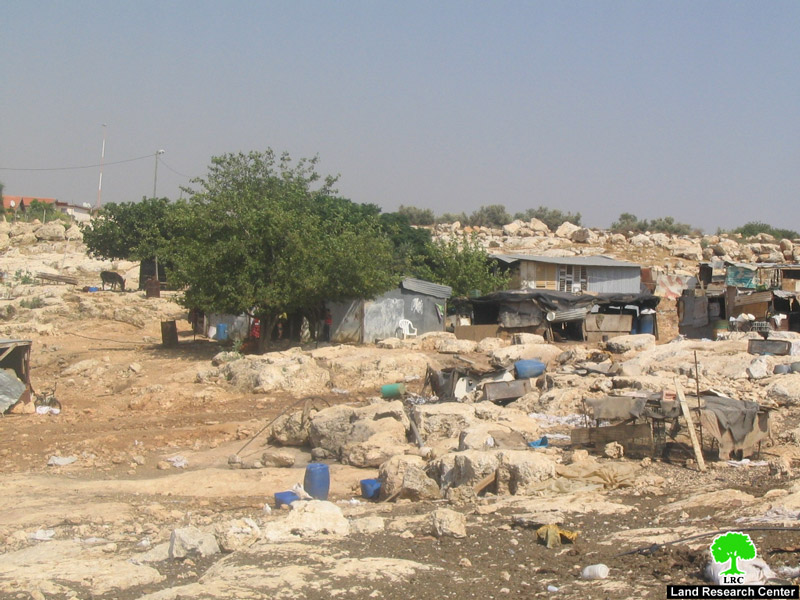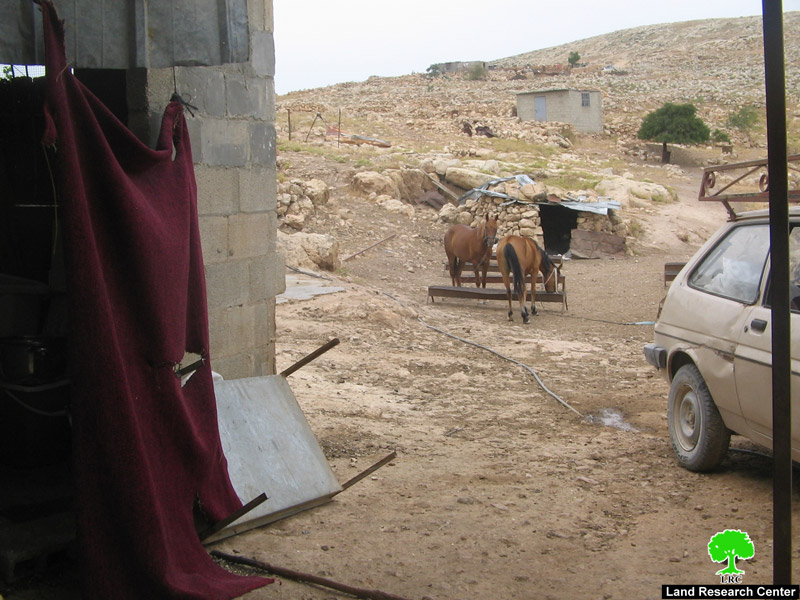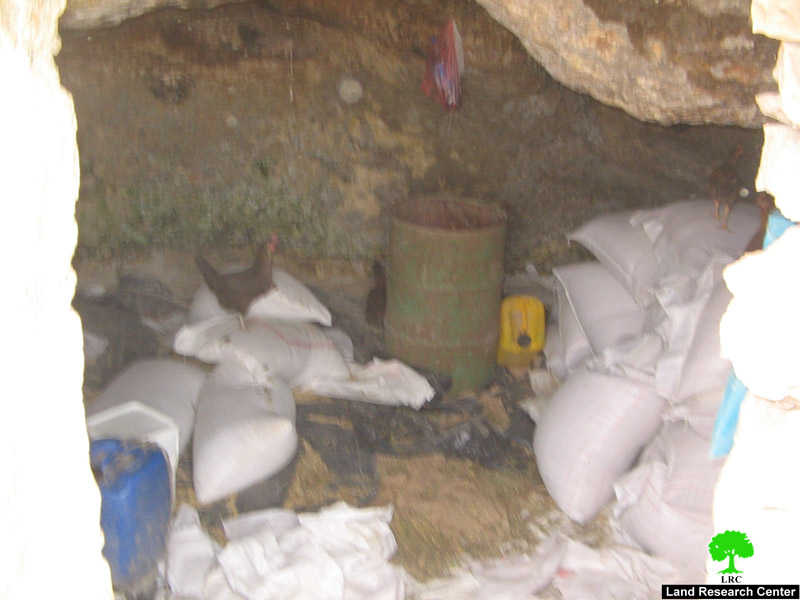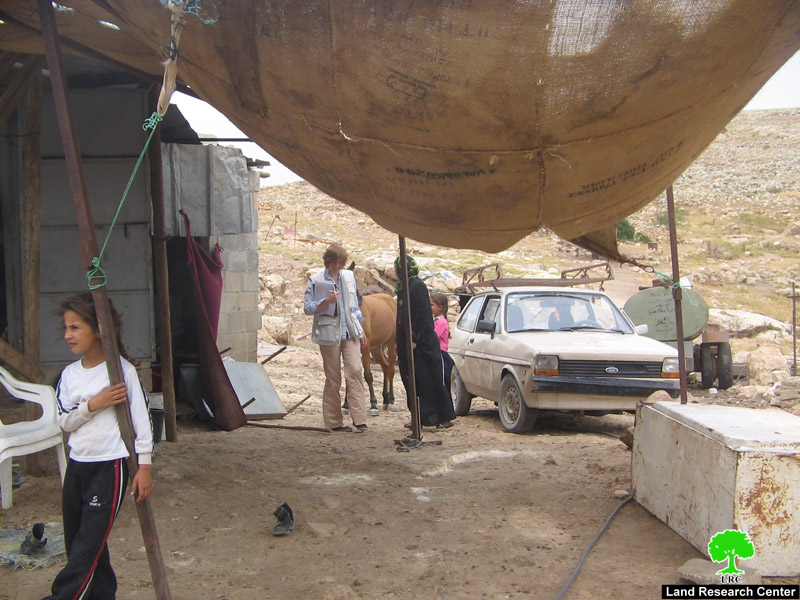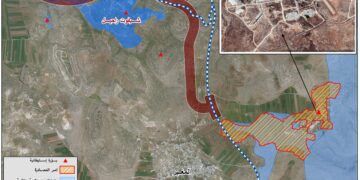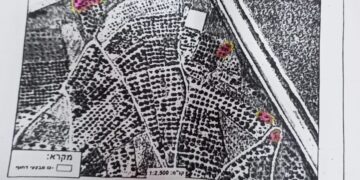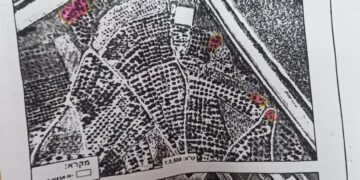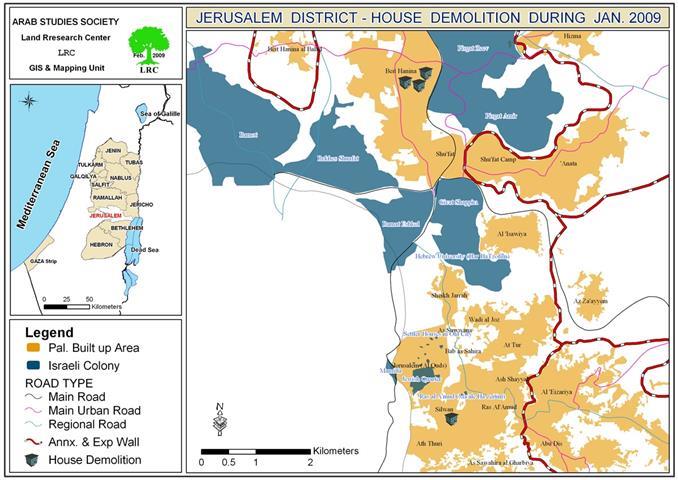In early February 2009, the so-called Israel “High Court of Justice” issued a final, non-objectionable decision to demolish all the agricultural bruxes located in Khirbet Tanna and the eviction of all farmers living in the Khirbet.
The 50 families currently residing in the Khirbet came originally from the nearby village of Beit Fureek. They have owned lands in Khirbet Tanna even before the Israeli occupation of the West Bank in 1967. However, Israeli occupation forces are trying to evict them from their Khirbet under the pretext that their lands are classified as located in Area C and, as such, their presence and building in that area is done without obtaining the necessary permits !!!.
18,000 Dunums are Under Threat:
In case the decision of the court is carried out, it will have a negative impact on the residents of the Khirbet as well as all of the nearby villages as it will place 18,000 dunums under the threat of being totally isolated and controlled by occupation forces. The threatened lands are located east of the village of Beit Furik and in the vicinity of the village of Jiftlik. The residents of Khirbet Tanna are the only ones who are protecting these lands via their presence there against the Israeli plans to gain full control over it.
Khirbet Tanna:
Khirbet Tanna is located 6 kilometers east of the village of Beit Furik on Parcels (33, 34, 35 and 36). There are 5 main clans in the Khirbet; Hanani, Muleitat, Nasaser, Khatayer and Hajj Mohammad all of which have origins in Beit Furik. The 50 families, who depend largely on agriculture and herding, have left Beit Fureek as Tanna provided a much suitable environment to practice their economical activities; it had wide and open grazing lands as well as 3 water springs (Ein al Turra, Thanab Al Tor and Khillet Al Ain).
The farmers of Tanna live in simple tin shacks and shelters. Most of them live primitive life in old caves. There are around 25 agricultural bruxes used to raise livestock. There is no basic infrastructure in the Khirbet as it lacks water networks and it has no electricity.
Photo 1: The daily life in Khirbet Tanna. The colony of Makhola appears in the back
Israeli Occupation and Colonists …. Continuous Attacks Against Tanna Residents:
Despite the simple life lived by Tanna Palestinians, yet they have lived in a stable and care-free life until the Israeli occupation of the West Bank in 1967. Since then, occupation forces have attempted to separate and isolate the Jordan Valley due to its strategic importance. As such, these forces declared about 18,000 dunums from Beit Furik lands as “Closed Military Area” and were used for military trainings and encampments. In 1969, the Israeli occupation authorities established Road 80 on Beit Furik lands leading to the isolation of the 18,000 dunums east of the Road. In the same year, construction started of the colony of Makhola which expanded over the years until its built area became 233 dunums and its municipal area control around 10,000 dunums. The expansion of the colony is still on-going until it became as close as 2 kilometers away from Tanna. Recently, attacks by the colonists supported by the so-called Israeli “Civil Administration” and occupation forces have been on the increase as Israeli soldiers chase off farmers from their lands located near Road 80 while preventing them from reaching their lands in the Jordan Valley under the pretext that it is “Closed Military Area.” As for the colonists, they use the available water springs to swim in during the summer seasons while preventing the Palestinians from using it for irrigation purposes. In addition, colonists also chase off Palestinian shepherds and destroy crops planted by the Palestinians of Tanna.
Photo 2: A Palestinian girl wonders about her and her family’s future after occupation
forces informed them of the inevitability of their eviction.
On the other hand, Israeli occupation forces have demolished in June 2005 around 25 agricultural bruxes and shelters used for raising herds and for human residency. They have also shut closed a number of caves used as human shelters under the same pretext of building in Area C without a permit. The attacks and violations continued ever since as Israeli occupation authorities refuses to issue a Master Plan for the Khirbet while allowing an unconditional expansion of the nearby colony of Makhola. The overall situation in the Khirbet was so critical that a number of rights organizations filed an official complaint in the Israeli so-called “High Court of Justice” claiming that the demolition of the structures owned by the residents living in an occupied land contradicts international and humanitarian laws and forms a gross violation of protected human rights. Moreover, the eviction of residents from their village conflicts with the articles of international law.
Yet, the court has issued its final decision to evict the Khirbet in accordance with the desires of the occupation army. What “justice” is that ???
Photo 3 & Photo 4: Israeli Court's Order
Prepared by:


